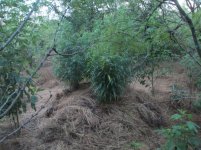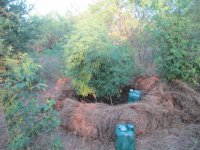My 1st outdoor grow is winding down, and I'm looking for some ways to amend my soil for the next season. I don't use any nutes outdoors. Just plant the lades in the ground after vegging indoors for a bit in some water only soil. Only thing I did on this run is top dress 2 times with EWC, watered twice with EWC tea, and gave each plant ~1 cup of Espoma Garden Tone, once during veg, and once leading into flower.
I'd really like to amend the soil for next season so that the next girls can get the nutes they need, and I'm looking to do it in the most cost effective IE free way possible. So far I've thought about tilling in my yard clippings and leaves bagged up from the mower, maybe a few bags of EWC. and I may also be able to get rabbit manure for $10/50lbs.
Does this sound ok, or will I be just be wasting time and/or making a toxic home for my plants?
I'd really like to amend the soil for next season so that the next girls can get the nutes they need, and I'm looking to do it in the most cost effective IE free way possible. So far I've thought about tilling in my yard clippings and leaves bagged up from the mower, maybe a few bags of EWC. and I may also be able to get rabbit manure for $10/50lbs.
Does this sound ok, or will I be just be wasting time and/or making a toxic home for my plants?




